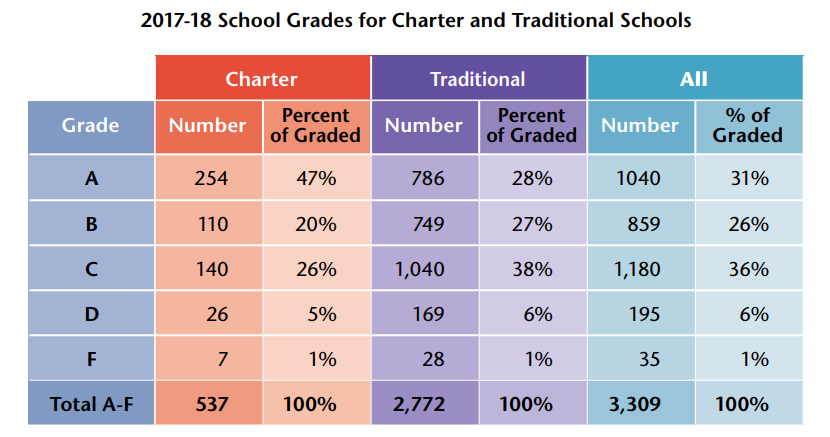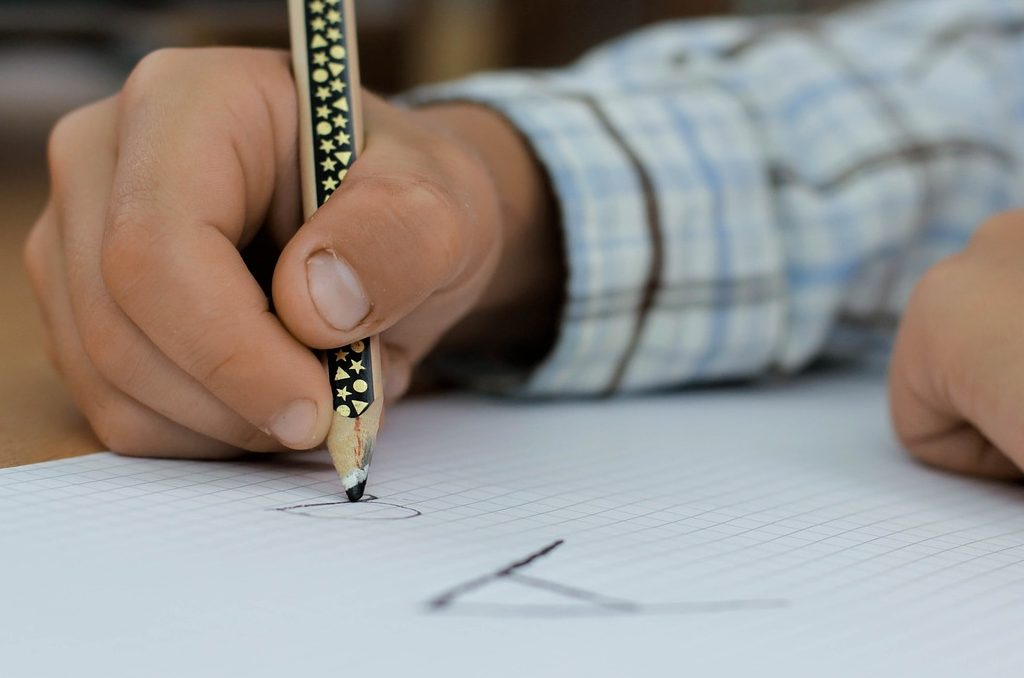A recent charter school performance report revealed Florida charter school students are outperforming their traditional public school counterparts.
Important Numbers
4.2 Million – The number of test scores from which data was gleaned to create this report.
195 – The total number of comparisons in the three areas analyzed.
3 – The score that is considered passing or at grade level.
With those numbers in mind, let’s dive deeper into the Florida Department of Education’s findings from the 2017-18 school year.
The test scores in question were a combination of Florida Standards Assessments (FSA) for English language arts and mathematics as well as statewide assessments for science and social studies.
The three areas of performance that were analyzed were: absolute achievement, achievement gaps and learning gains.
The report only includes the scores of students enrolled at a charter or traditional public school for the full 2017-18 school year.
Absolute Achievement
The absolute achievement section, which had 77 separate comparisons, measured the percentage of students who scored a three or above.
In 63 of the 77 comparisons, students enrolled in charter schools demonstrated higher rates of grade level performance versus 13 comparisons of students enrolled in traditional public schools. Only one comparison showed no difference.
When compared to the 2016-17 academic school year, charter schools actually saw one increase from 62 to 63. Traditional public school students took a step back in 2017-18, dropping from 15 comparisons demonstrating higher rates of grade level performance.
Achievement Gap
The achievement gap section analyzed the gap between white students and African-American students and white students and Hispanic students in the four major subjects.
Of the 22 separate comparisons in this section, charter school students had a lower achievement gap in 19 comparisons. Traditional public school students didn’t fare well, with only 3 of 22 comparisons showing a lower achievement gap.
Charter school students actually took a step back since the achievement gap was lower in 20 of 22 comparisons in the 2016-17 school year. Traditional public school students had a lower achievement gap in 2 comparisons, so there was a minuscule improvement.
Learning Gains
The learning gains section had a total of 96 comparisons that reviewed the improvements students made.
Again, charter students blew away their traditional public school peers, showing higher learning gains in 88 of the 96 comparisons. Traditional public school students made gains in just 3 of 96 comparisons and there was no difference in 5 of 96 comparisons.
In the 2016-17 school year, charter school students made higher learning gains in 79 of the 96 comparisons, so a big improvement the following school year. However, it was a massive step back for traditional public school students as they went from 11 in 2016-17 to 3 in 2017-18. The number of comparisons that show no difference was 6, so that also regressed in 2017-18.

The report, which can be reviewed here, was a joint effort between the Office of Independent Education and Parental Choice (IEPC) and the Bureau of Evaluation and Reporting in the Division of Accountability, Research and Measurement (ARM).
Chris began his writing as a hobby while attending Florida Southern College in Lakeland, Florida. Today he and his wife live in the Orlando area with their three children and dog.

